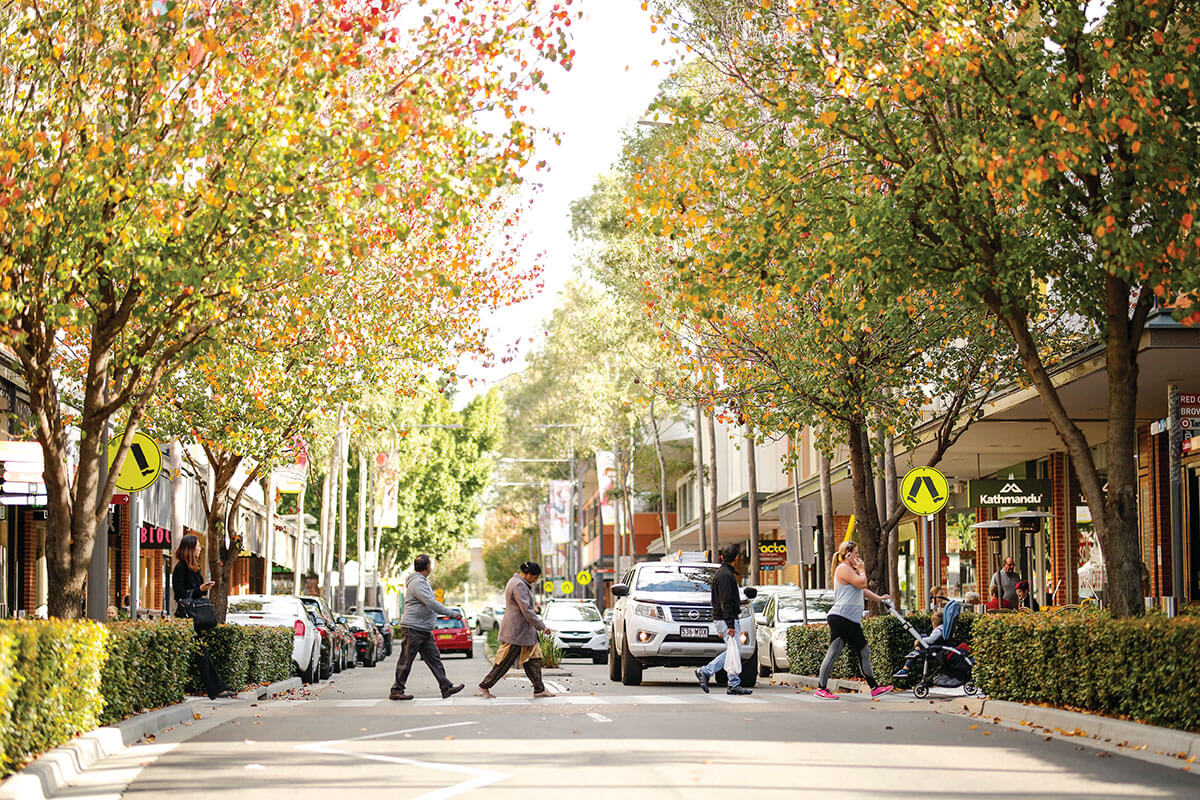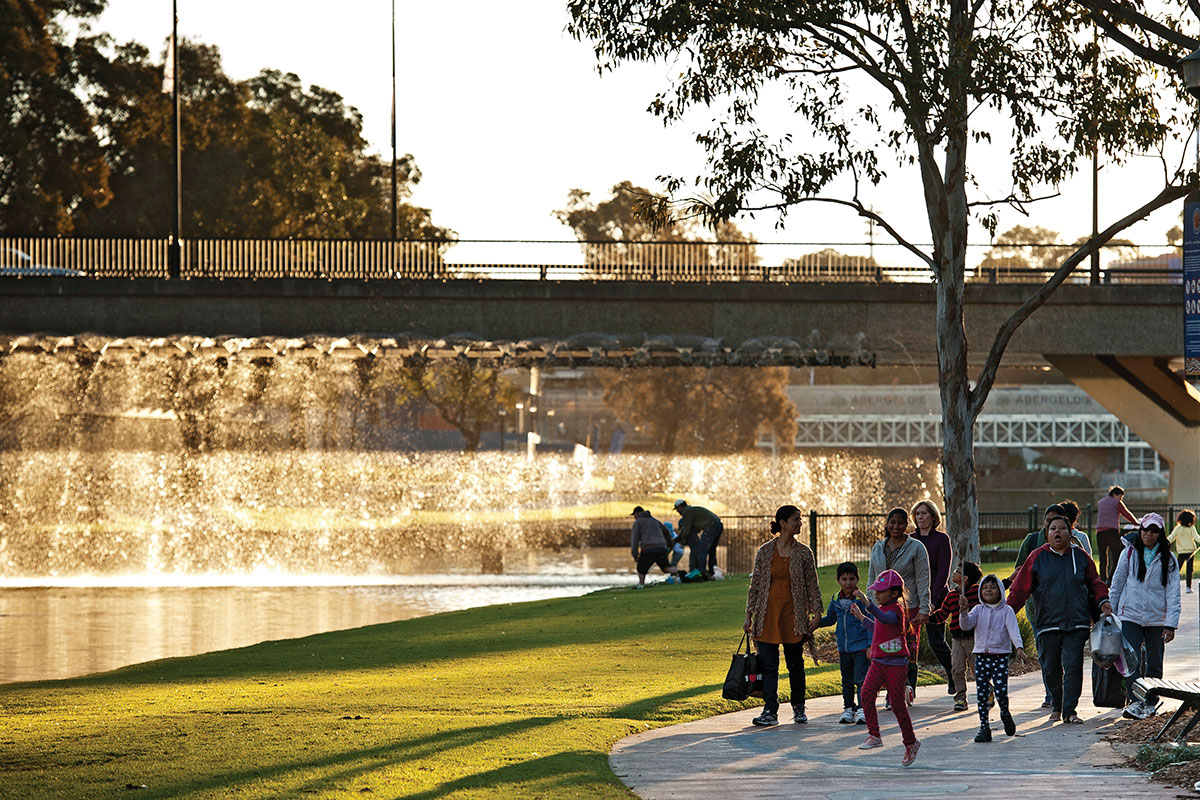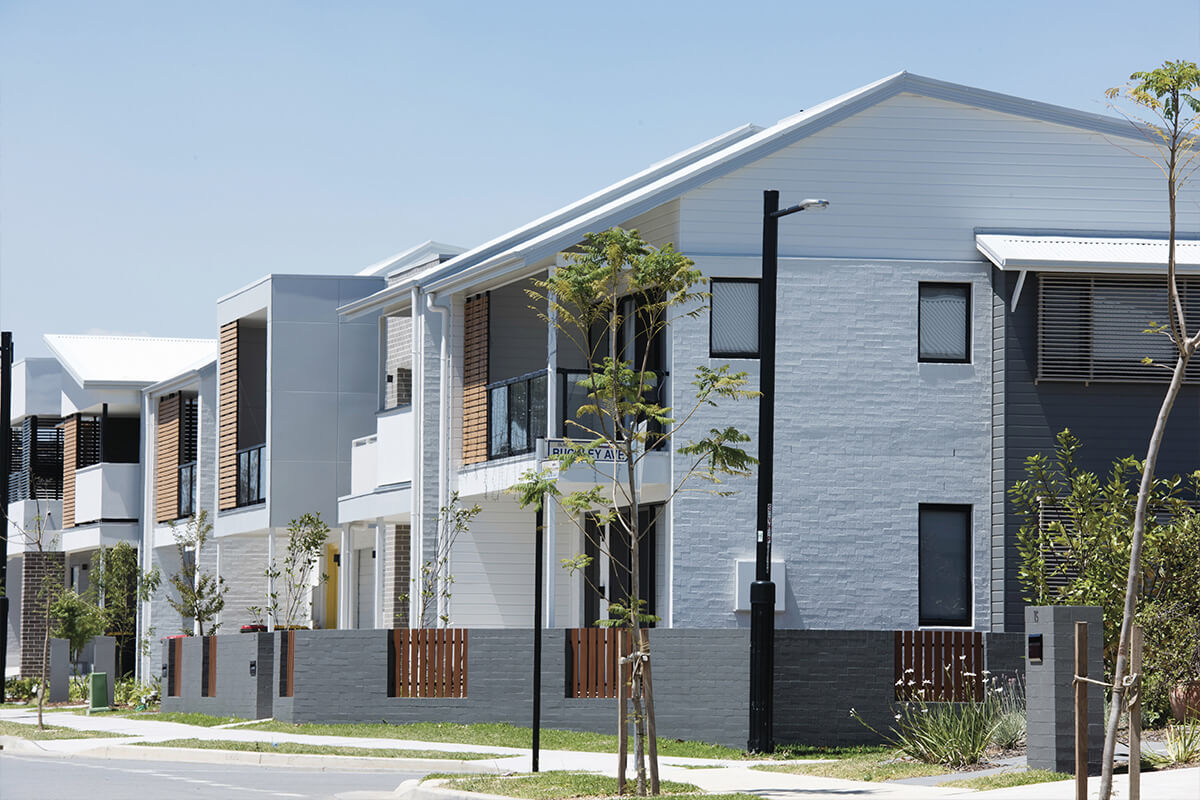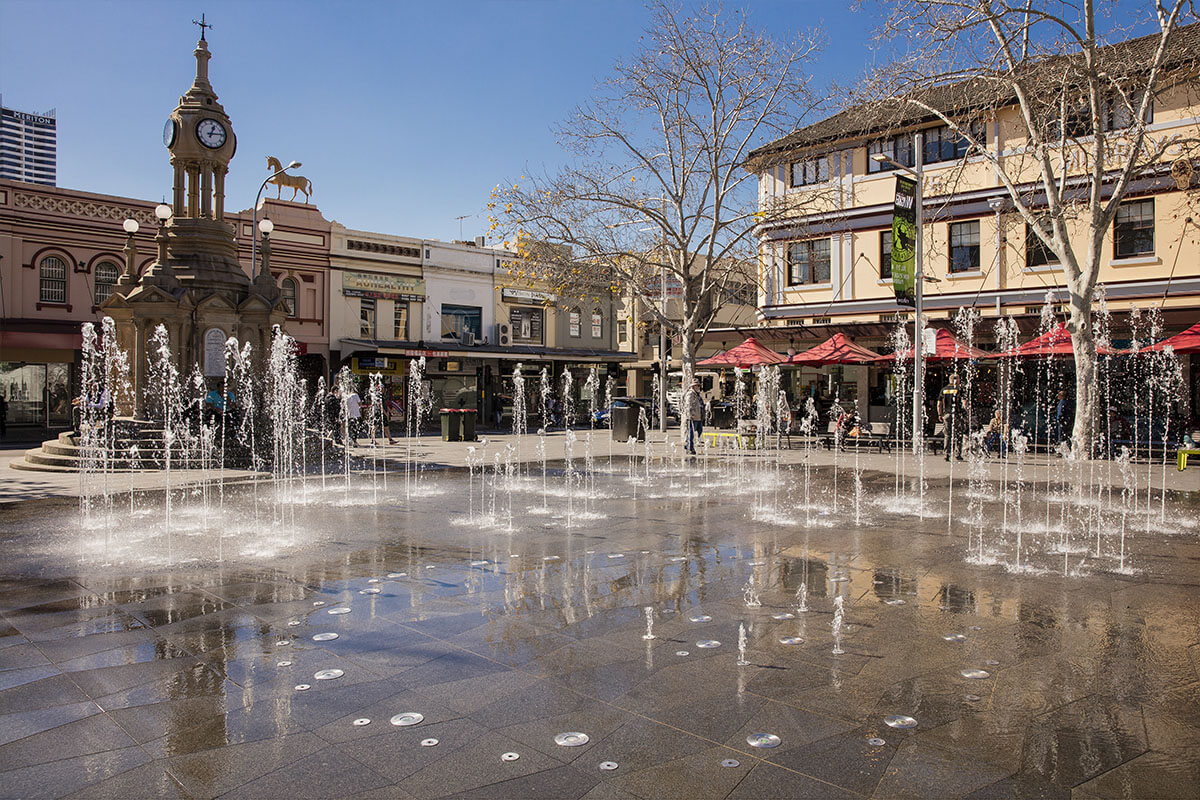Greening our urban areas creates liveable neighbourhoods, supports biodiversity in our cities, makes us feel more connected to nature and each other and improves our health and wellbeing.
We can all play a role in urban greening by protecting existing trees and ensuring there’s space for trees and greening in new developments.
Plan strategically for urban greening
Councils, government agencies and development proponents can take a strategic and holistic approach to urban greening by:
- considering tree canopy and green cover early and consistently when planning for development at the precinct, suburb or local government scale.
- understanding the current canopy cover of an area using the most recent urban heat and tree canopy data set or local council spatial data.
- setting canopy targets to prioritise the retention of existing trees and maximise opportunities for new canopy.
The NSW Government has established voluntary, evidence-based urban tree canopy and deep soil benchmarks at the precinct and individual lot scale. The benchmarks are included in the Greener neighbourhoods guide (PDF, 11.3 MB).
Several precinct masterplans and strategies led by the NSW Government have embedded canopy benchmarks to guide development. These include the Greater Penrith to Eastern Creek Strategic Framework, Macquarie Park Place Strategy and Camellia Rose Hill Place Strategy.
Councils can also consider greening needs across their local government area by developing an urban forest strategy and street tree masterplan. Developing an urban forest strategy ensures strategic directions, goals and actions respond to local conditions and are designed to protect and enhance urban canopy and maximise cooling benefits. A street tree master plan can guide the species selection of street trees and identify priority planting locations where cooling is most needed.
Many councils have embedded urban heat considerations into strategies by including one or more of these elements:
- an overarching vision, strategic direction or target focused on cooling or urban heat mitigation
- use of urban heat island and heat vulnerability index data to understand where the community is most vulnerable to the impacts of urban heat
- regular review of urban heat data to keep priorities up-to-date.
Design sites for healthy tree canopy
When designing a site for healthy and resilient tree canopy, consider deep soil, access to water, tree placement and suitable species.
Design for interconnected deep soil
Deep soil is essential to healthy root system development and ensuring trees reach maturity. On your site, seek to:
- provide sufficient deep soil zones for maximised tree planting
- minimise barriers to tree growth by consolidating below-ground services and undergrounding overhead cables and powerlines
- protect interconnected and undisturbed soil networks across development sites and public spaces and along waterways and green corridors
- support healthy tree growth with contiguous deep soil zones and water-sensitive urban design.
For more information, visit Take action on cooling with water.
Locate trees to allow for maximum cooling
The cooling effect of trees can be maximised by carefully considering the planting location.
In precincts, seek to:
- distribute trees evenly across urban areas to create widespread cooling and avoid heat islands
- prioritise hot spots that have little vegetation for effective shading
- position and space trees to promote healthy growth and minimise the need for pruning
- Ensure canopy planning does not compound other hazard risk.
On streets, seek to:
- target planting on wide, open streets and east-west oriented streets that are exposed to increased solar radiation
- space trees to deliver continuous, overlapping canopy to maximise shading.
On individual sites, seek to:
- maximise planting in contiguous deep soil zones
- locate trees to minimise the need for pruning
- locate trees to suit the orientation and shading needs of the building
- plant close to property boundaries to maximise shading on adjoining lots.
Select suitable species
Selecting tree species with characteristics that provide shade, robust evapotranspiration and the ability to act as a windbreak will help maximise cooling. When selecting species for your site, consider:
- local soil and climate conditions
- balancing the need for summer shade and winter sun
- overhead space and underground infrastructure
- if a species’ size, height, and canopy shape are suitable for the site’s conditions
- planting a diversity of tree species to help build resilience against changes in climate and water availability
- hazard risk, including bushfire and drought.
Consult your local council’s suitable or preferred species list and refer to the Which Plant Where tool to identify the right trees for your development.
Provide access to water
Trees need a high level of maintenance while they become established, including regular watering for the first 2 growing seasons.
Water a newly planted tree regularly in the first 6 weeks after planting. A thorough soaking is better than more frequent light watering to encourage a deeper root system. Adjust how much and how often you water in response to natural rain and drought conditions. In times of drought, water the ground from the base of the trunk out to where the branches stop.
Consider integrating water-sensitive urban design into the landscape to enable efficient irrigation.
Projects should prioritise water sources and efficient watering methods to support canopy by establishing an integrated water management plan where possible.
For more information, visit Take action on cooling with water.
Plant and maintain trees using best practice
Maintain trees on your site or property
For trees to reach their greatest cooling potential, they need regular maintenance.
Tree care tips
- Water trees regularly during the establishment period.
- Place mulch around trees to keep moisture in the soil. Mulch reduces the need for watering and prevents weed growth and damage to the trunk. Keep mulch clear from the stem or base of the tree and form a bowl shape to allow water to flow towards the plant.
- Prune trees to remove dead or diseased branches and promote new growth. Before pruning your tree, read and follow your local council’s policies as you may need to apply for a tree permit.
- Consider developing a maintenance program for your mature trees with regular inspections by a qualified arborist or horticulturist.
For more information, visit Tree care tips.
Maintain trees in public spaces
Managers of public land can maintain trees on streets and in open spaces by:
- developing and maintaining a tree asset database to collect data on your trees and inform maintenance programs
- developing maintenance plans and carrying out routine tree-pruning and maintenance works to prevent the spread of diseases, promote healthy growth and reduce the risk of broken limbs
- ensuring that the trimming of trees, especially around powerlines, does not affect tree condition and structure and is consistent with current Australian standards and industry best practice
- considering opportunities to convert overhead powerlines to bundled cables or underground services, where possible, to enhance canopy along streets
- incorporating succession planning, particularly in areas with mature tree canopy, to ensure ageing trees are renewed and the urban forest is maintained over time
- engaging the community to actively maintain recently established trees on streets and parks.
Complement canopy with diverse green cover
Where development sites or an urban area can't support the deep soil required to establish extensive tree canopies and shade, consider the use of alternative types of green cover.
Providing greening on walls, roofs and balconies gives flexibility when embedding greenery into new and existing developments and makes the most of the available space. Bioswales, raingardens, understorey planting and lawns increases the cooling impact by combining blue and green interventions.
These alternative green cover types can be tailored to suit the character and context of a site and can provide cooling benefits while young trees are maturing.
Bioswale/raingarden
These are vegetated linear or meandering channels or sloping depressions designed to receive stormwater runoff from impervious surfaces. Raingardens are a vegetated form of bioretention. Typically used in a lower lying area, raingardens collect and manage runoff.
Extensive green roof
An extensive green roof is a lightweight roof garden with a shallow depth of approximately 150 mm. In many cases it can be retrofitted to existing buildings. Suitable plant species are typically low-growing groundcovers or grasses requiring minimal maintenance.
Intensive green roof
An intensive green roof has a growing medium typically greater than 150 mm deep. This requires a strong roof structure. The profile can sustain a broad range of plant species from shrubs to trees.
Biosolar green roof/cool roof
This combines solar panels with green roofs. Cool roofs are designed to reflect sunlight while maintaining the aesthetic of more traditional roofs.
Green facade
A green facade uses supported or unsupported climbing and trailing plant species planted in the ground or in planters. The plants grow up or cascade down to provide full or partial cover to a building wall, façade or other shade structure.
Green wall
A green wall is an engineered vertical support structure, typically panellised or modular, that contains a rooting medium and an irrigation and fertilisation system. It is intended to cover a wall partially or fully.
Green/cool pavement
These are pavements with high surface solar reflectivity to minimise heat build-up or permeable pavements that have evaporative cooling qualities and reduce runoff by infiltrating rainwater.
Deliver greening through planning mechanisms
Strategic plans and planning controls can be used by councils and state government to respond to urban heat. For more information, visit Using planning strategies and controls for cooling.
Other actions you can take
We can use urban structure to create cooler and more liveable spaces.
We can all play a role in building cooler developments.
We can all look for ways to sustainably incorporate water.
Resources
Greener neighbourhoods guide (PDF, 11 MB) (NSW Government) offers guidance to NSW councils on how to strategically manage their urban forests, including by setting canopy targets and making or updating urban forest strategies.
Biodiversity in Place (NSW Government) is a framework that provides guidance on how to integrate biodiversity into our urban spaces, from verges, backyards and rooftops to roads, railways and creek corridors.
Urban green cover technical guidelines (NSW Government) provides practical guidance for councils, government and industry on how to adapt the urban environment through urban green cover projects, such as green roofs and walls.
The Framework for Valuing Green Infrastructure and Public Spaces (PDF, 1 MB) (NSW Government) provides a standardised, robust and comprehensive way for councils, government and industry to identify and quantify costs and benefits associated with green infrastructure and public spaces. Available as a companion document to NSW Treasury Cost Benefit Analysis Guidelines.
Trees for a Cool City: Guidelines for optimised tree placement (CRC) for Water Sensitive Cities) provides guidance for councils, government and industry to optimise tree placement to maximise the cooling effects of street trees and deliver the largest benefits for human thermal comfort.
Western Sydney Street Design Guidelines (NSW Planning Partnership Office) provides design guidance for councils, government and industry on the design and placement of trees on a range of street types.
Street Tree Planting Design Manual (PDF, 10 MB) (NSW Government) is a how to guide for councils, government, and industry to identify and prioritise streets for tree planting, design considerations and innovative tree planting solutions.
Copperfield Drive Technical Study (PDF, 8 MB) (NSW Government) provides councils, government, and industry with an example of best-practice design for street trees and integrated water management systems.
- Which Plant Where is a tool to help practitioners and decision makers to identify species that will be resilient to climate change across Australia.
- Tree care tips are available from the Royal Botanic Gardens on how to choose the right plant and how to look after it.
- Waverley Council’s Starting a native garden offers gardening tips to support sustainable landscaping in the community.
- Willoughby Council’s Love Your Trees campaign gives advice on how residents can help protect the urban forest. It outlines council’s efforts to support urban greening.
- North Sydney Council’s Planting trees guide gives practical advice for residents on selecting, planting and caring for trees.
- City of Ryde’s Tree Selection and Establishment guide gives advice on selecting tree species for the Ryde area and advice on how to maintain your tree.
Designing for a cool city: Guidelines for passively irrigated landscapes produced by the CRC for Water Sensitive Cities provides guidance for councils, government, and industry on how to use stormwater to improve the health of plants and trees and design passively irrigated landscapes.
Water Efficiency Study for Urban Tree Management (PDF, 3 MB) commissioned by the NSW Government, provides advice and guidance to councils and government about how to use water efficiently to support tree growth.



